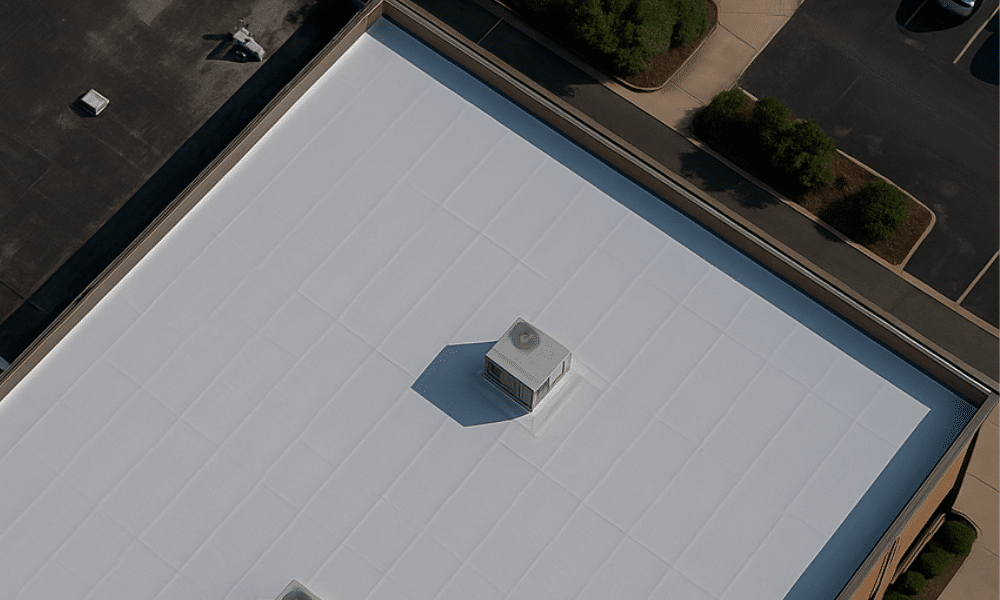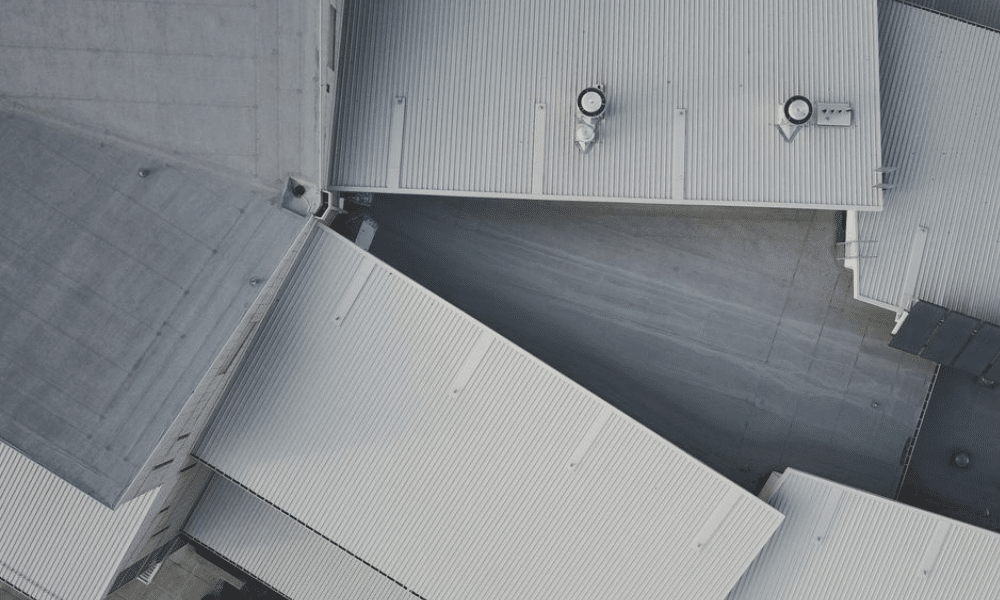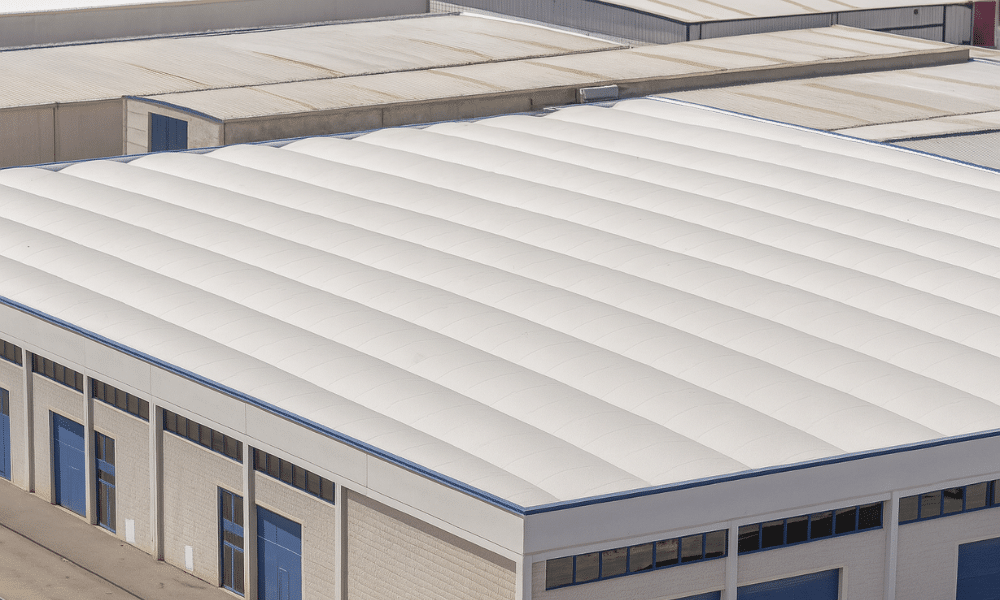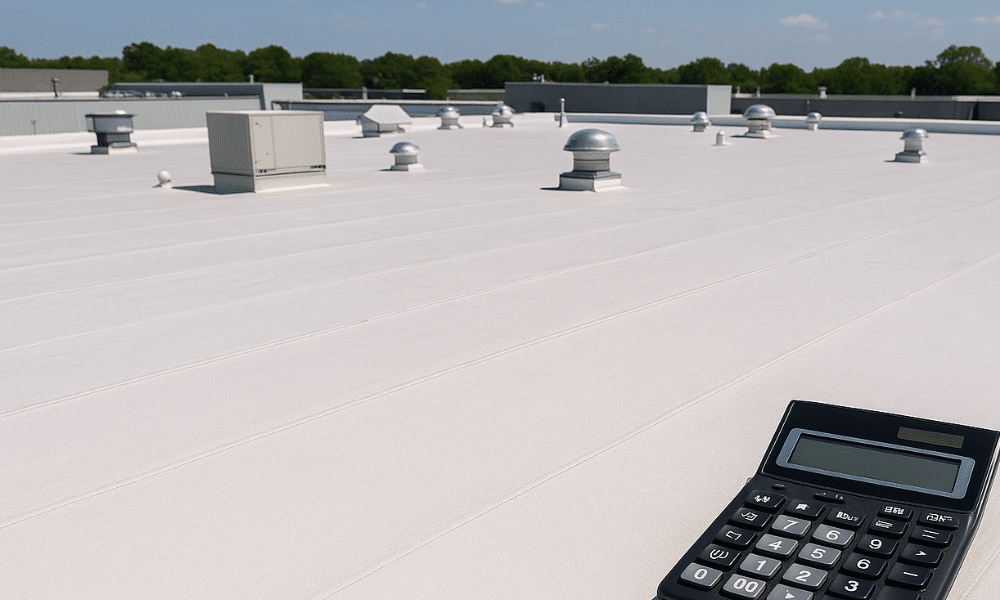
Summary Highlights:
- Understand the structural and financial differences between re-roofing and overlays.
- Learn how local codes, warranties, and long-term value factor into your decision.
- Identify when a roof overlay may put your investment at risk.
- Discover how WaterTight Roofing helps property managers make confident, cost-effective roofing choices.
If you're managing a commercial building, chances are you'll face a major roofing decision sooner or later: re-roofing or overlay? At WaterTight Roofing, we guide property managers through this decision every day because it's not just about today's cost. It's about lifespan, safety, building codes, warranties, and even future resale value. The wrong choice can lead to long-term headaches; the right one delivers peace of mind and budget protection.
What's the Fundamental Difference Between Re-Roofing and an Overlay?
Re-roofing involves removing the existing roofing system down to the deck and installing a brand-new roof assembly. It allows us to fully inspect and address substrate issues, upgrade insulation, and ensure every layer is up to modern standards.
An overlay, also known as a roof recover, places a new membrane or system over the existing roof without removing the old one. It can be cost-effective in the short term, but overlays come with risks. If the existing system has trapped moisture, deteriorated insulation, or hidden structural problems, those issues remain buried and may worsen.
How Do Building Codes and Warranties Impact My Options?
One of the biggest deciding factors in re-roofing vs. overlay comes down to code compliance and manufacturer warranties. Most jurisdictions only allow one roof overlay. If your building already has one, re-roofing may be the only legal path forward.
Warranties also play a role. Roofing manufacturers often provide longer warranties for full replacements because we can ensure proper installation on a clean substrate. When we remove the old system entirely, we also get the opportunity to improve insulation and ventilation, maximizing performance and lifespan.
Is a Roof Overlay Ever the Right Choice?
Yes—in the right conditions, overlays can be a cost-efficient solution. Flat or low-slope roofs with minimal damage, good drainage, and a single existing membrane are good candidates. However, even then, we recommend moisture surveys and core sampling to confirm the substrate's integrity before proceeding.
When overlays make sense, WaterTight Roofing ensures every step meets industry best practices. We maintain strict quality standards—even when installing a secondary system—because long-term value still matters.
What Should I Consider About Long-Term Costs and Risks?
A full re-roof costs more up front, but it offers better long-term ROI. Why? Because we eliminate hidden damage, improve insulation (which reduces energy costs), and make your roof more storm- and code-resilient. Plus, we reset the lifespan clock and get you a full new warranty.
Roof overlays might seem budget-friendly, but if trapped moisture leads to deck rot or leaks, you may end up paying for emergency repairs—or even a premature full replacement. That's why many of our clients choose the peace of mind that comes with starting fresh.
WaterTight Roofing has built a reputation as the most trusted company for commercial roof replacements. We don't just install new systems. We educate building owners on the full life cycle of their roofs so they can make smarter financial decisions now and in the future.
How Do Insurance and Liability Affect This Decision?
Whether you're pursuing a replacement or an overlay, it's critical to understand how insurance comes into play. Insurers often scrutinize recover projects more closely because of the inherent risks. In some cases, your policy may not cover damage from a failure if it was preventable with a full replacement.
That's why we help our clients navigate insurance claims for commercial property owners with care and transparency. We assess storm damage, document degradation, and even coordinate with adjusters to make sure you're properly covered—whether you're repairing, overlaying, or replacing the roof entirely.
What's the Best Next Step If I'm Not Sure Which Route to Take?
Start with a full roof assessment. Our team at WaterTight Roofing evaluates structural integrity, code compliance, existing materials, and budget goals to provide a clear, customized recommendation. We'll give you the pros and cons of each approach—no pressure, just facts.
Because re-roofing is a major capital investment, it should be grounded in accurate diagnostics and thoughtful planning. And while overlays can offer a temporary solution, they should only be done when it's truly the right choice for the building's condition and your long-term objectives.
Not all commercial roofs are created equal—and neither are your options. Let's look at your building's needs and financial goals, and determine the smartest, most protective roofing path forward. Reach out to WaterTight Roofing at 888-809-9976 for expert analysis and transparent guidance tailored to your property's future.
FAQs About Roof Replacement
Blog subscribers get new resources and how-to guides delivered via email.
Your Business Relies On Staying Dry





